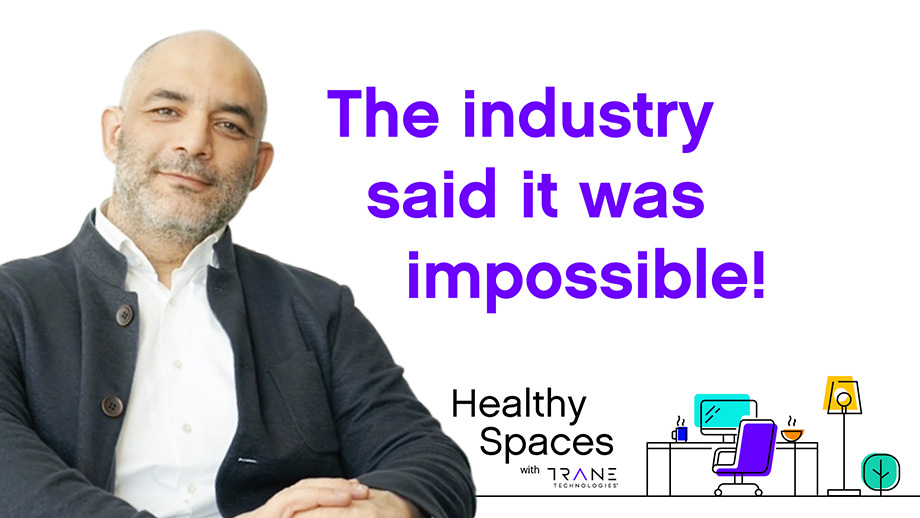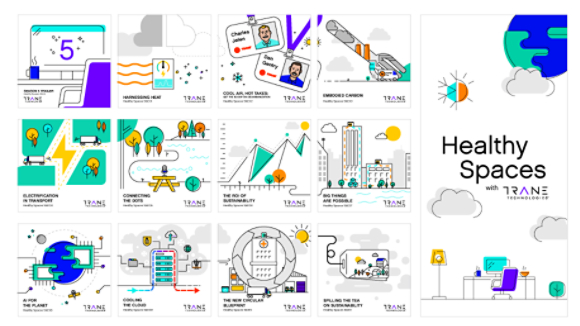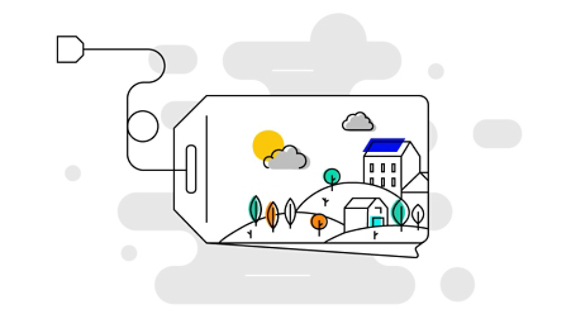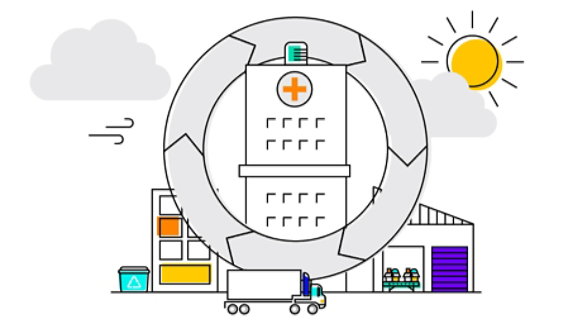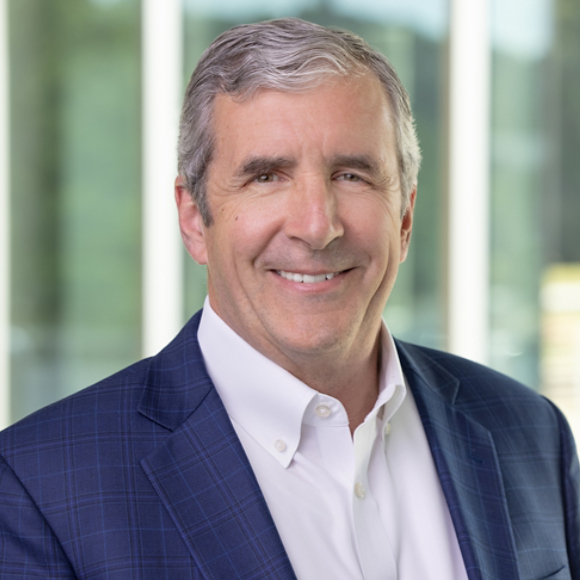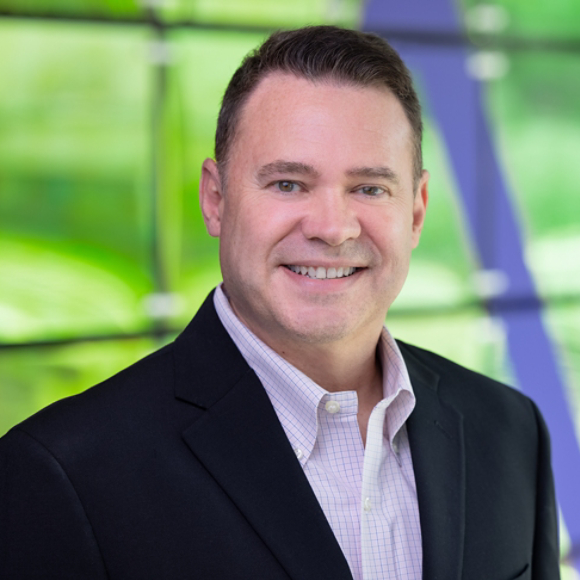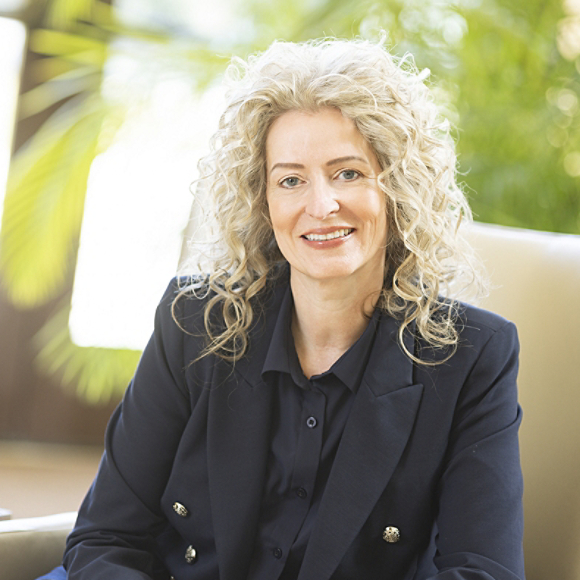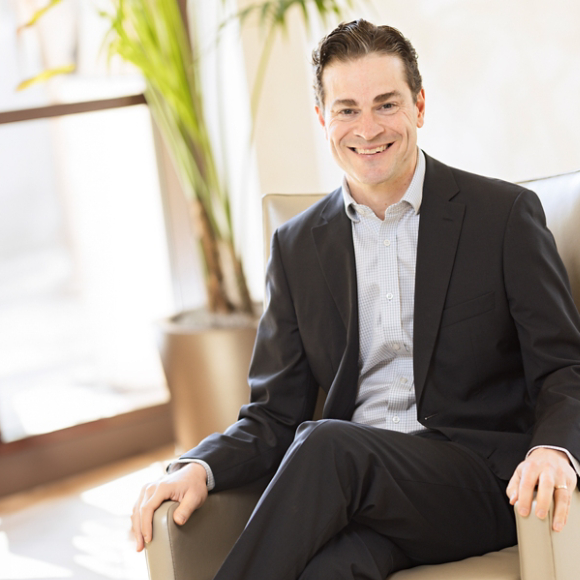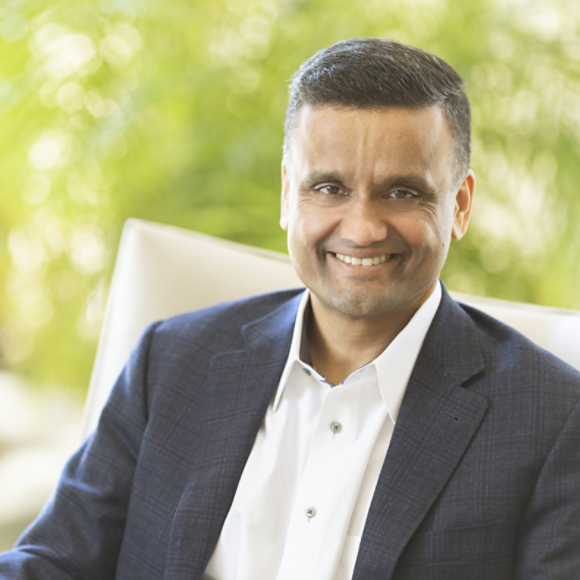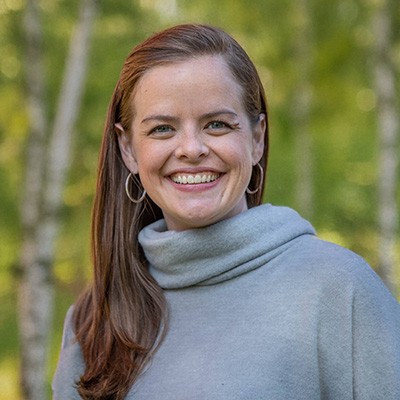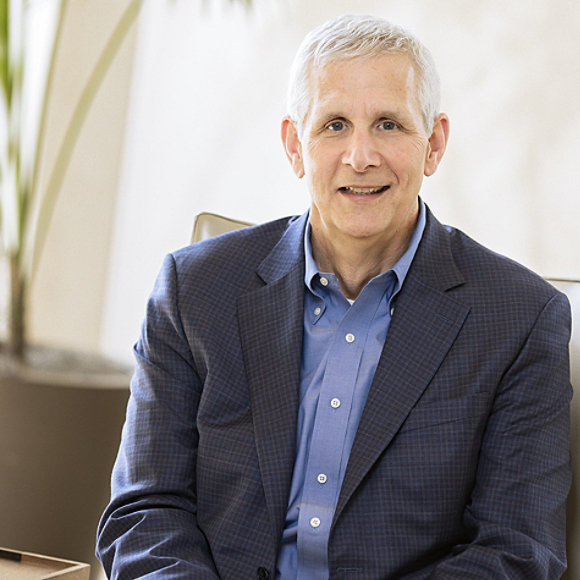August 05, 2025
Electrification of Transport
Season 5 Episode 4: Reducing Carbon Emissions for the Long Haul
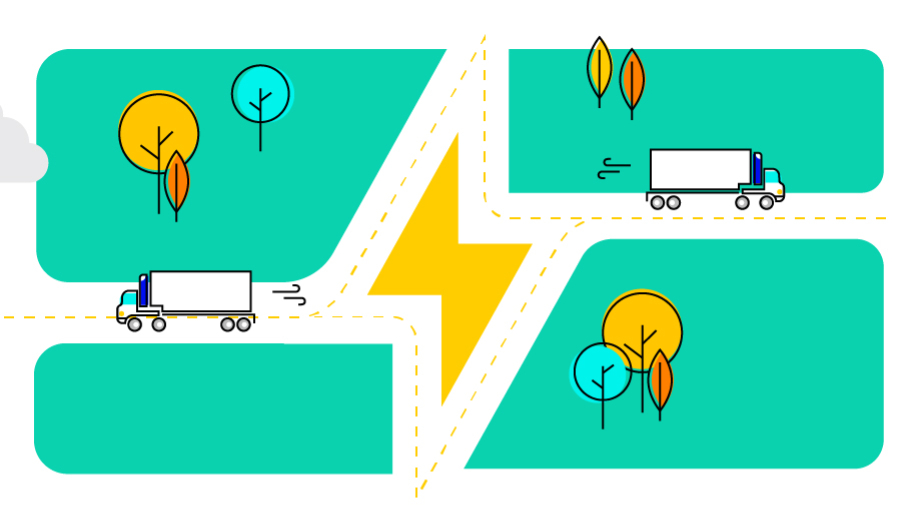
Electric vehicles are growing in popularity – small cars, SUVs, even pickup trucks. But what about electric long-haul tractor trailers? How can we extend the benefits of electrification to larger vehicles?
Reducing carbon emissions on the road
It’s true that, owing to the size of the batteries required, electrification of heavy-hauling trucks is a difficult task. However, disruptive innovators have capitalized on this gap in the sector. Thanks to groundbreaking electrification solutions, one customer was able to drive 265,000 kilometers over two years without ever re-charging their trailer battery.
In this episode, we speak to Abdullah Jaber, CEO and Managing Director at Trailer Dynamics, and Roland Duquesne, Director of Key Accounts for the EMEA Region at Thermo King.
We’ll discuss game-changing trailer technology, and how the electrification of long-haul transportation not only reduces carbon emissions, but also helps truckers get to their destinations faster.
- In a bid to decarbonize transport, we've seen a surge in technologies that aim to reduce emissions, from electric cars all the way to hydrogen buses. But long-haul transportation has been left behind. That is, until now.
- These batteries of the trucks are so huge, refilling them takes super long time. It is expensive, time consuming. And now we are coming with these eTrailers that are making this application possible in the first place.
- In the United States, long-haul trucks alone contributed more than 3% of all CO2 emissions. That's from a study in 2022. The environmental impact is huge, but as we've discovered in this series, that means it's also an area that's ripe for innovation.
- You're listening to Healthy Spaces, the podcast where experts and disruptors explore how climate, technology and innovation are transforming the spaces where we live, work, learn, and play. I'm Dominique Silva, Marketing Leader at Trane Technologies.
- And I'm Scott Tew Sustainability Leader here at Trane Technologies. On Season Five of Healthy Spaces, we're bringing you a fresh batch of uplifting stories featuring inspiring people who are overcoming challenges that drive positive change across multiple industries. We'll explore how technology and AI can drive business growth and help the planet breathe a little easier.
- Hey Scott.
- Hey Dominique. How are you?
- Oh, well my day is going great. I drove into the office today with my electric car, as you know, I have one
- Super happy, there was no traffic. Even happier that while I was in meetings I could charge my car at the office and that left me full of power to head back home and be able to talk to you.
- Well, and as you know, I also drive electric and that's always the worry, right? It's range.
- Oh yeah,
- How far is too far? And whether you're going find a
- Are we gonna get there?
- Are we? Yeah,
- that is so true.
- And whether we have a find a place to charge along the route. So that's always important.
- Sure. Well, it does require a little bit of planning. I'm, I'm not gonna lie. And having a good infrastructure like we have here in Belgium is pretty helpful.
- Yeah. And I know this episode we're talking about electrification of something called long-haul transportation. And that is a big question. How far is too far, especially for a big truck? And so this is something we'll explore here.
- Right. Well, you know what, Scott, not only is electrification possible for trucks, it's possible for trailers too. And I'm betting you're wondering what the difference is. 'cause it wasn't obvious to me until I spoke to our guests.
- Well then let's get into that.
- So, right, exactly. So trucks are basically like rigid boxes, right? So that's what we're typically used to seeing on our roads, and they're usually used for inner-city delivery, right? So imagine from Lisbon to Faro, right? Just for our European listeners. Trailers, however, are intended for really, really long distances. So this could be like New York to California, and usually with the trailer you have the box, which is refrigerated, or not. And then you have the tractor, which is pushing the, the, the trailer along. So we're gonna be talking about these two types of vehicles today, and I am really excited to get started.
- And for our listeners who might be in North America, the tractor trailer that you were talking about, we also refer to many times as 18 wheelers because of the number of tires that are there, mainly for long-haul trucking.
- That's a lot of wheels, Scott.
- It is.
- Can you imagine 18? All right, well, next time I'm in the US I'm, and I find a trailer. I'm gonna stop and count.
- There you go.
- Just to check with like 1, 2, 3. All right, well let's get into it, Scott. So our first guest is Abdullah Jaber. He is the CEO of Trailer Dynamics, which is a company based in Aachen, Germany. So Trailer Dynamics was only founded in 2018, but its mission was strong from the start to decarbonize long-haul transportation. Now, check this out. Abdullah is a physicist, and one day he just had a light bulb moment. And from his perspective in Europe where there was a lot of push and legislation moving towards the decarbonization of vehicles, trucks weren't included. And so he simply asked the question: Why?
- What we discovered was actually that there are some reasons why this transformation is so slow or not happening at all. And the main reason is actually that although batteries are super awesome and, and, and, and the, the technologies actually on their hands, but the energy that can be stored in batteries is not really sufficient for long-haul applications for trucks. Trucks are big and huge, huge amounts of energy in, in, in diesel terms, roughly something like 30 liters per hundred kilometers. And, and this is compared to some vehicles at, at tenfold energy consumption. To give you a kind of, of a feeling, what, what, how huge this problem is. So in, in Germany, the, the, the amount of registered heavy-hauling tractors is around 2% of all registered vehicles, but they're causing 30% of all emissions.
- Wow.
- So these are the real big contributors to the emissions. And this is why it is so important to let's say, solve this issue to mitigate the CO2 emissions that are caused by transportation.
- I'd like to explore a little bit your journey, not so much as a physicist, but as an entrepreneur to really disrupt the industry, right. And make the problem, which seemed impossible, suddenly seem achievable. Right. Solvable
- To, to be honest, in, in the, in, in the early stages, I never thought about being an entrepreneur. It was like more like coming from this scientific background, working on a concept and giving this concept to players in the industry and telling them, you know what? This is something that makes sense. And, and the funny part was that a lot of them rejected this, but not because it didn't make sense, but because it was too complicated or it was out of scope. At that time, I also tried an approach towards, let's say the track OEMs. And, and one funny part was there were a lot of people there working for a long time on diesel trucks, and they wanted to preserve their investments, technologies, whatever. At some point, some guys scouters from Daimler invited us to an accelerator called Plug In Autobahn in Stuttgart. And these guys were connecting startups or, or people with ideas with the industry. And fortunately enough for us, Porsche was also part of this incubator, and they brought us to their company logistics. We had the first time an access to a potential customer who had a big problem. They were transporting, or still today transporting volume transports in their internal logistics. And for this kind of transport, there was no electrification solution at all. But they had, as a company, high pressure to also reduce or improve their CO2 emissions in their production
- Right.
- and logistics process. I think in, in our context and, and this very special niche that we're working on, being collaborative or cooperative is, is really very, very important.
- Yeah. And you've mentioned a few partners already, but I know one of the partners that you're also working with is Thermo King.
- Right.
- Can you speak a little bit to, to the synergies there and, and what you're doing with Thermo King?
- Right. So, so Thermo King is offering cooling units for trailers and trucks, and we have here a very interesting development because in, in the old days, specifically in the trailers, these, because of this interchangeability and, and let's say this island solution in the trailers, they mostly had diesel generators on, on the trailer causing a lot of noise and probably also emissions. And, and there was pressure towards eliminating these emissions. And, and Thermo King was one of the first to then go for this kind of only electric solutions. So in the, in the, in the thinking about, you know what? we have already a very huge battery with a drive train in the trailer, why not also use this energy for electrifying the cooling unit? was really a low hanging fruit. So it was really an easy match to, to find such an awesome partner like Thermo King for, for this kind of approach. Yeah.
- You know, you've kind of come back to this mission that is very true to the core of Trailer Dynamics, which is to decarbonize. You've given us a lot of clues as to the path to decarbonization is through electrification. So I think it's time, Abdullah, for us to get a little bit nerdier. And let's talk specifically about the eTrailer, right, so how exactly were you able to solve the problem of electrifying a trailer? Right, how did you do that?
- Right. So, so let, let's go a step back and, and just understand what the contribution of the trailer is in, in the context of driving resistances. So if we have a normal semi-truck and semi-trailer, let's say let's stand with a European configuration, it's a little bit heavier than the American one. In average, the contribution of the eTrailer is roughly 60%. So 60% of the driving resistances happen at the eTrailer. And these are a little bit aerodynamic driving resistances, but mostly rolling and acceleration and climbing resistances. The truck is handling the aerodynamics in the front.
- Yeah. Could you just define for us a little bit what you mean by driving resistances?
- Yeah, so let's imagine you're driving your bicycle and you want to accelerate. So you have to push a lot into the pedals to get to the, to the, to the speed
- The destination
- that you are wishing to, right? And when you are driving along, you will have also wind resistance, obviously you will feel it and, and pushing against you, so this is the reason why you cannot accelerate over a specific speed, depending on your physical conditions, right? And if you are lucky and living, for example, in Aachen, you will have ups and downs. And, and this is also something that you will feel if you go, let's say stop peddling, you will also see that your bicycle will come at some point to a stop. This is due to the internal resistances in your bicycle. And everything I mentioned is also true for any vehicle. So aerodynamics plays a role in trucks because they're big, but the, the bigger impact comes from the heavy weight of this vehicle, the mass, 'cause if they,
- That's what they have to carry, right?
- Right. 40 tons to accelerate 40 tons is, is really, you need to put some effort into that.
- Yeah.
- So this is the main cause for the energy consumption and coming back to the division of what is the contribution of these specific vehicles, kind of 40% is happening in the truck front, in the tractor. 'cause it needs to push against the wind and the other 60% are happening in the trailer because it is carrying the load and it's having friction on the, on the tires and when you have to climb. Right? It is, it is the heavy thing that you're pulling. But this is really the main opportunity for our solution because if you are creating 60% or more in driving resistances, why not try to mitigate these driving resistances? And this is what actually our solution is doing. We are trying to make the trailer as light as possible for the pulling vehicle. And this is what actually is happening in the trailer. This is defining the size of the batteries, the size and output of the torque and, and power of the axle. But we are going now into details what actually is defining an eTrailer. So you have to have a driving axle, an eAxle, you have to have this battery storage. So you have to need to have a fully fledged electric drive train and, and specifically for the eTrailers, they need to feel the dynamics of the truck and the trucks that are already currently on the road and are still produced, never have been designed for this kind of application. So they have no specific control over the driving abilities or capabilities of the trailer. So the trailer itself needs to anticipate the dynamics of the truck and, and mimic the dynamics. So it is like an eBike. It needs, you have no dedicated cable as mentioned in the head of the eBike driver, but the dri the eTrailer magically feels what the driver's actually aiming for. And, and we are doing that in our coupling sensor. So the coupling sensor is feeling the, the, the, the, the towing force of the truck and, and, and the trailer control is trying with its own means, let's say that way to mitigate this, this coupling force. and, and, and just following the truck,
- Explain that last link to me again, Abdullah, right. So like what are you doing? Are you recovering energy? Like what are you doing?
- Not really. So, so the energy recovery potentials in long-haul applications is surprisingly low. We are talking about 3 or 5% of the overall energy that could be recuperated. No, what what we are doing is we have an active propulsion system, a battery that needs to be charged and, and it is contributing up to this 60% in the overall driving activities of the, of the whole semi-trailer truck combination to, to overcome the specific drive resistances of the trailer. And to give you a kind of idea what the implications are: so if we take existing battery electric trucks, modern electric trucks today, the ranges that they have are somewhere between 250 and 350 kilometers. But the normal long-haul applications are somewhere between 600 to 800 kilometers. And if you have a trailer that is contributing 50% or more in overcoming driving resistances, you can assume that you can double this range. And this is what is happening. And this is a super positive thing because the biggest obstacles and issues for electric trucks we didn't touch yet is the lack of infrastructure, charging infrastructure,
- Right.
- And this is a super huge problem because the chargers that are available outside are mostly made for passenger vehicles. So they are limited in the power output, mostly not easy accessible for huge rigs, and not everywhere. It is really also a, a, a problem from a, from another perspective as these batteries of the trucks are so huge, refilling them takes super long time. It is expensive, time consuming in, in essence, it doesn't work really with the existing logistics procedures. And now we are coming with these eTrailers that are actually making this application possible in the first place. This is something that is enabling the introduction of battery electric trucks into long-haul applications very easily. But to our surprise, we learned that a lot of our customers are already also combining these battery electric trailers with their existing diesel trucks. And this is something very unique and, and, and, and also impressive because they're solving, they're, they're reducing their diesel emissions or diesel consumption and CO2 emissions right away with already proven technology. And they have, they're overcoming this range anxiety issue because they have in essence something like a plugin hybrid.
- And it's really interesting, right? 'cause if we go back to the beginning of the conversation and why you started Trailer Dynamics in the first place, there was a lot of a resistance to electrify and you know, based on this example that you're showing us of customers getting creative of how they combine different technologies to get better range and improve efficiency, right? So, I would take that as a surprising and a, a good learning too.
- A lot of surprises on that journey. So, so Dominique, what there are, there, there were something or, or surprises that we didn't anticipate, obviously surprise, right? That was that with this additional drivetrain trailer, we had some 800 ish additional power, and this was the most thing that the truck drivers, even the diesel truck drivers loved about that because the driving for the first time felt effortless for them. They were accelerating live passenger cars and, and also for the owners of the vehicles, it was a positive effect because in average for long-haul applications, these trucks were half an hour to one hour faster than conventional trucks, depending on the terrain. And obviously the, the combination with the diesel and this huge diesel consumption reductions were also very positive in a combination with a battery electric truck. There was also surprise in the first place with us where we, when we went for the first ever test journey from Germany to Spain, obviously kind of 2000 kilometers or something like that, we were planning for a lot of intermediate charging stops and long-haul charging, long time pauses for charging. But something that we, and I'm feeling kind of dumb today, didn't think about is that you can actually charge the truck, the electric truck and the trailer simultaneously
- Of course.
- So this cut the charging time also in half and the charging interval. So we, at the first time we did, we'd have done this very far journey with our prototype. We were driving with a diesel truck as a backup, as a backup in the, in the, in, in behind us. And we were roughly two hours earlier in Spain at our destination than a diesel truck because we were faster, had more power, and the charging stops were shorter than we assumed.
- As a sector, long-haul transportation is full of dinosaurs. So that's companies that have been around a really long time and can be really resistant to change. But Abdullah and his team are proud disruptors. Their technology is proving that electrifying trailers is not only possible, but it has real benefits for customers: reducing travel time, which reduces emissions. However, plot twist, there are also incumbents companies that are riding the wave of change. And to tell us more, here's Davide Previsdomini, Product Manager for Self-Powered Truck for the EMEA region at Thermo King.
- My name is Davide Previsdomini. I am product manager for the Thermo King EMEA large truck portfolio, and I'm based in Galway, Ireland. What really excites me is one innovation that I'm part of and I believe that it could really change the world. This is the E-Series for large truck. The E-Series is a full electric new product that will really help our customers transition from the use of diesel fridges to the use of electric fridges. This new unit can be powered by, directly by the battery of the trucks or through an alternator, very efficient alternator that can be mounted on the engine of the vehicles themselves. So this is another step forward to reducing our carbon emissions and also contributing to the sustainability of the transport industry.
- Thanks Davide. We're going to dive into more of that technology right now with my next guest, Roland Duquesne, director of key accounts for the EMEA region at Thermo King. Roland works with trailer builders, retailers, rental services, and more to create value propositions for customers. He started working for Thermo King right out of university and he has experienced firsthand the evolution of this industry. And right now, Roland is gearing up for another influx of innovation.
- We've never been through so many changes in the industry as we see today. That's clear, undebatable. And what's very interesting for us in the front line in sales meeting customers that we have a lot of things to talk to customer about: new technology, new opportunities and all that kind of thing. So it's a very good, it's a very good period for, for, for, for us. The things are changing outside there and we have to, when we surf on that wave, it's perfect. You know,
- So throughout this episode so far, we've been talking a lot about electrification as a means to decarbonize or reduce the carbon footprint of the long-haul transportation sector. And Thermo King has a really interesting solution that I would love if you could explain to our listeners a little bit, a little more about, so it's called Advancer AxlePower, right?
- Right.
- The Thermo King AxlePower. If I were a customer and I was, you were explaining the solution to me for the first time, how would you explain what it is?
- Yeah, very good question. And, and, and it's a very interesting solution because it started years ago already, I'd say probably about 10 years ago because it's a solution that we have introduced, finally launched in 2020. Huh. But it's something, an idea that started some years ago when we saw on one of the show that the axle, one axle provider was showing a generator on an axle at that time that was just to power the light inside of trailer or operating or give ring of power to their braking system. And from that time we started to talk to them and we said, okay, we would be very interested because we have this, we have in Trane Technology, this, this ESG commitment, you know, this Gigaton Challenge and other commitment on, on that side, on sustainability. The idea was to say, can we, can we power our equipment in a different way and give them energy in a different way than just burning fuel, fossil fuel? And it was the idea was to say, okay, let's, let's, let's see how we can run them in electric. That's how it started.
- So before you started looking at the axle right, or the eAxle as a generator of power, so to speak, what were some of the barriers to electrification? So I mean, what could we already electrify the, the, let's call it the fridge, right? So the refrigeration unit, the fridge on the trailer or the truck. Could this already be electrified? And if yes, why weren't, wasn't everyone doing it?
- Well basically there was no, no, no possibility. First it was, we always had a capability to run our fridge static on a parking, on a distribution center, plugged electrical with electrical grid connection. Huh. So that's something that was always there. So there, the, the idea was to say, okay, obviously our trailer are not meant to be parked. Customer wants to drive transport from across Europe from one place to another. And we needed to say, okay, how can we, how can we power those? And, and, and the idea was say, okay, we know that when we have a tractor, a 400 horsepower tractor pulling a trailer, a part of the energy that the tractor is, is, is using, is to obviously overcome rolling resistance on the trailer. A big chunk of it, maybe one third, let's say one third is probably about, okay, how do we, how, how we, how we overcome aerodynamics. And the big chunk, another chunk of the energy, about 25% of the energy is there to basically to compensate the breaking losses. Okay? And we say, okay, this energy is there, why don't we see how we can use this energy basically to power the fridge? Because the fridge just need a, a small part of that energy. So that's why we say, okay, let's, let's think about it. Why don't we equip and why don't we find the right partner to equip an axle of the trailer with generators that could, that could recuperate this energy lost during breaking and power a fridge. And in that case we could, we could basically run a fridge in electric while on the road, not anymore just static parked on the parking.
- How is this Thermo King AxlePower solution different than, from other solutions that might already exist on the market?
- So if I look at what's, what's on the market there specifically to our industry, when when you have big customer big feet operating across Europe, they're very sharp on utilization. They want, they want trailer to run. And one of the key differences inside of our energy pack, the tech, our battery, our battery technology itself, the cell, the cell of the batteries don't need to be calibrated and rebalanced every week. So just by that technology customers saying, oh this is a big advantage versus the other system because the other system I have to stop the trailer every week to balance the cell. The big difference as well is the size of the two generator. We have two eight kilowatt generator integrated on the axle created by BPW. The size of the generator makes up the recuperation is very efficient, very rapid, very quick and can be really used only when it's needed. Okay. Contrary of other system, other system are working like I would say like in the bicycle, a dynamo that's on the wheel, it always turned and you always consume energy. In our case not, we have different modes, different mode of utilization. So we can decide to, for example, recuperate only when there is a feeling of breaking okay and we accelerate the breaking recuperate, or when we are going downhill, there are, there are sensors that allow us to recuperate in that case downhill or breaking. We can as well, if there is any way that will bring us also to the range discussion. We could as well say to customer, listen, if you still want to extend the range and you are ready to compromise a little bit the energy on the tractor, we can program the state of charge of the energy pack so that we always keep your reserve into the battery so that you can still run with it in electric. I would say as well, the TRU itself, the advancer that we have launched is the most efficient unit on the market by the size of the evaporator, the condenser, by how it operates is the most efficient unit on the market. And we see that also in the consumption energy needed for the advance the co, the combination with the smart power management that is in our energy pack, huh, which I explained going downhill or or leaving some state of charge and the most efficient TRU, the advancer unit in it makes it the best package on the market basically.
- Now given that you spend every day in and out talking to customers, learning more about their operations and how these sort of electric solutions with energy recovery systems can work for them, what has been the feedback so far? I mean, are customers adopting this?
- So we have just the first feedback starting with one of the first customer in Holland that, that basically was working from distribution center to distribution center in the sort of normal ambient temperature, right? So what what we did is that we agreed with the customer, he's driving a gas tractor. Okay? So he was already moved away with his tractor from combustion from from diesel tractor to gas. And he said, I would like to understand if there is an impact of your full electric system and your TRU or your advancer with the energy pack and the eAxle, on the consumption of my tractor. During two years we measured with him completely what was really the temperature, where he was driving, how he was driving, and we were comparing two tractors, one standard tractor, one tractor with gas, one trailer with standard equipment, internal combustion engine with all the energy pack and one with our system. And at the end of two year we found out that the impact of the trailer, which was the electric trailer, so the energy pack and the eAxle and the electric TRU, was influenced by less than 0.4 liter of gas on the tractor compensating largely basically what was not used in fuel on the trailer, which was the standard technology with diesel basically. So that was also a very important moment for us. The other example I just wanted to, to, to highlight is, is an example we had from Scandinavia because it was a very interesting one because during 2 years a customer was testing, was running with this system from a basically a production site to a distribution center from a retailer 190 kilometer, 200 kilometer a day, basically a trip, sorry. And a small, a small downhill of a hundred, a hundred meter, more or less. And what we found out after 2 years is that the customer never plugged his, had to recharge a battery at home.
- Wow. 2 years.
- He was only, 2 years. He drove 265,000 kilometer without plugging to recharge the battery, the battery just being recharged by the eAxle. And the battery pulling and and running the unit basically. So you can see the saving here is very important for the customer. It generated this customer, I looked at the number the other day, generated more or less more than 10,000 kilowatt hour during that period of free energy.
- Exactly, right. It's free, I mean I'm, I'm, you know, as an electric car driver, I'm still coming back to how do you drive 265,000 kilometers 2 years, right, worth of operations without ever having to charge a refrigeration unit? And actually, and that's something else I wanted to ask you, hold on, because, you know when people get very scared by the term electrification and they immediately think, oh that's too expensive, but the Advancer AxlePower solution is that also compatible with non-electric vehicles?
- There are some customers that are still a little bit, not reluctant, but they say, oh, I don't want to go the full step towards full electric and I, I prefer to have a hybrid solution. Hybrid solution basically gives the opportunities, the possibility to the customer to still have a fuel tank on the trailer and a internal combustion engine on the TRU in case of this operation, any hazard risk, okay, of something. Mainly sometimes in the pharmaceutical, pharmaceutical sector industry people are asking that because they like to have a backup type of a mentality type of unit. So they're asking for this,
- You know, we've talked a little bit about the past, we've talked a lot about the present and you've talked about solutions that your customers are adopting today. What are you excited about for the next 5 to 10 years?
- What will change in the industry in the next year is, there are several topics basically here that, that, that we are discussing very strongly today. First we see a lot at the moment and huge potential is everything that has to do with data management, understanding the data that we collect and how AI can influence the usage of this data so that we are much more efficient from a service, from an uptime, bring more value to the customer. And that is really something very important, and something that Trane Technologies is looking at a very, very, with, with a lot of, a lot of care and we are looking forward to, to put that development as well. So that does matter. And then the other topic for me, Dominique, is really about okay, we know that electrification is there, we'll still come, it's really how we work, how we talk to the, to the chassis manufacturer, the the manufacturer of the BUV vehicles, so the battery driven vehicles: Mercedes
- Right.
- How we integrate with them, how our unit become more efficient so that they can power, they take less power from the battery of the truck for example, or the small van, this type of things. Those are really game changer. This is really putting the industry basically to some, to other levels you know.
- Dominique, I have to say that I am so impressed by the innovations that our guests have described in this episode. I agree with Roland that they are really taking the industry to another level.
- I know, right? And what excites me is that there's just so much collaboration and different players from different sectors are coming together to optimize the technology and reduce energy consumption.
- Yeah, exactly. And what I really felt was a, just a lot of optimism about the industry and the changes ahead. It's not the first time that this has happened, and the first movers are really coming together now to navigate the complexities.
- And it always comes back to those founding ideas, which is basically how do we consume less? How do we waste less?
- Yeah. And on that note, I'd love to hear from our listeners, is your company exploring electrification of vehicles and transportation? No matter the scale, small, medium, large. Leave us a comment and let us know.
- And if you drive a vehicle, is range the number one concern on your mind? Let us know in the comments as well. And that's it for this time. This has been the Healthy Spaces podcast with me, Dominique Silva and my co-host Scott Tew. And if you want to know more about the topics we covered today, you'll find all of the links in the show notes. We're back in just two weeks with another episode, so be sure to like and subscribe so you don't miss out. Thank you for joining. We'll see you next time.
Featured in this Episode:
Hosts:
-

Marketing Leader EMEA, Trane Technologies
-
Global Head and VP, Sustainability Strategy, Trane Technologies
Guests:
-
CEO and Managing Director, Trailer Dynamics
-
Key Account Director, Thermo King EMEA, Trane Technologies
-
Product Manager, Truck, Thermo King EMEA, Trane Technologies
About Healthy Spaces
Healthy Spaces is a podcast by Trane Technologies where experts and disruptors explore how climate technology and innovation are transforming the spaces where we live, work, learn and play.
This season, hosts Dominique Silva and Scott Tew bring a fresh batch of uplifting stories, featuring inspiring people who are overcoming challenges to drive positive change across multiple industries. We’ll discover how technology and AI can drive business growth, and help the planet breathe a little bit easier.
Listen and subscribe to Healthy Spaces on your favorite podcast platforms.
How are you making an impact? What sustainable innovation do you think will change the world?
Topic Tags

 English
English
